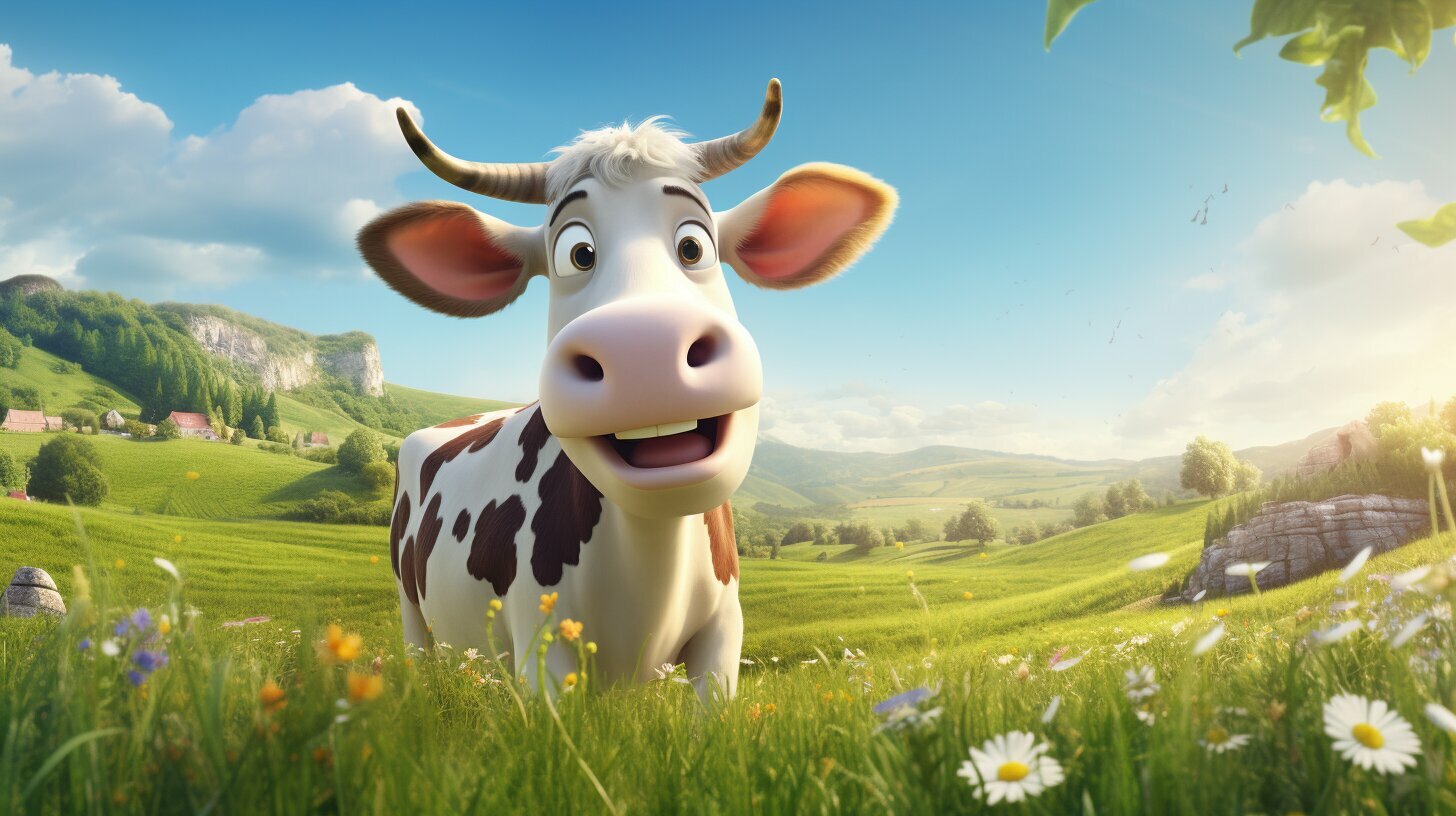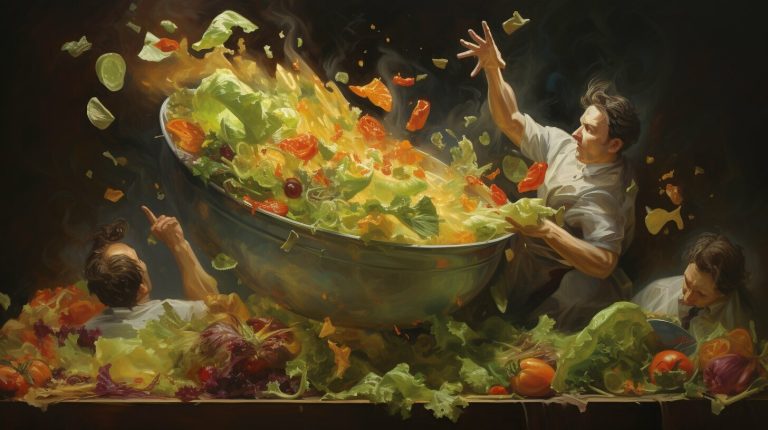Curiosity Satisfied: Why Do Cows Have Nose Rings Explained
Cows have long been adorned with nose rings, but have you ever wondered why?
Key Takeaways:
- Nose rings are used for various reasons in cattle management.
- For weaning calves, nose rings with spikes discourage suckling and ease the stress of weaning.
- Nose rings are also used to control bulls, providing better control and safety for handling.
- In agricultural shows, nose rings can be required for showcasing bulls.
- Temporary and permanent nose rings offer different levels of protection and control.
Understanding Cow Husbandry Practices
Cow husbandry practices involve a range of techniques aimed at ensuring the well-being of cattle. These practices encompass various aspects of livestock management, from feeding and housing to breeding and healthcare. One important aspect of cow husbandry is the use of nose rings, which serve multiple purposes in the management and control of cows.
When it comes to weaning calves, nose rings with spikes are commonly used. These rings make it uncomfortable for the cow to suckle, discouraging the behavior and facilitating the gradual separation of the calf from its mother. By separating the weaning process into two stages, the stress on both the cow and the calf is reduced, resulting in a smoother transition.
Nose rings also play a crucial role in controlling bulls. The sensitive area of the nose allows for better control, as the rings can be attached to a lead rope or bull staff. This provides farmers with a safer approach to handling powerful and potentially dangerous animals. By utilizing nose rings, farmers can effectively manage bulls and ensure the safety of both humans and animals involved.
In addition to their practical purposes, nose rings are also significant in the context of agricultural shows. Show societies often require nose rings for showcasing bulls, as they contribute to both the appearance and behavior of the animals. Temporary nose rings are used in the show ring, while permanent rings provide additional protection and control for bulls.
Overall, nose rings have proven to be practical tools in cow husbandry practices. They not only aid in weaning calves and controlling bulls but also contribute to the welfare and management of cattle. By understanding and implementing these practices, farmers can ensure the well-being of their cows and maintain a safe and efficient farming environment.
The Purpose of Cow Nose Rings: Weaning Calves
When it comes to weaning calves, cow nose rings play a significant role in the process. These nose rings, often equipped with spikes, are designed to discourage suckling and separate the weaning into two stages. By making it uncomfortable for the cow to suckle, the spikes create a natural barrier that helps ease the stress of weaning for both the calf and the mother.
With the use of nose rings, farmers are able to gradually and effectively transition calves from relying on their mother’s milk to transitioning to solid food. This method allows for a smoother weaning process, reducing the emotional and nutritional shock that can occur when calves are abruptly separated from their mothers.
Moreover, cow behavior is also influenced by the presence of nose rings. While some initial resistance may be observed, cows quickly adapt to the rings and learn to respect the boundaries they create. This reinforces discipline and ensures that calves are weaned properly without causing unnecessary distress to the animals involved.
| Benefits of Cow Nose Rings for Weaning Calves: |
|---|
| Gradual and controlled transition from milk to solid food |
| Reduces emotional and nutritional shock for both calves and cows |
| Promotes discipline and proper weaning process |
Overall, cow nose rings serve as practical tools for farmers in managing their cattle and promoting the well-being of both calves and cows during the weaning process. By understanding the benefits of nose rings for weaning, farmers can ensure a smoother and more successful transition for their herds.
Controlling Bulls: A Safer Approach
Bulls can be powerful and potentially dangerous, which is why nose rings are employed for better control. The sensitive area of the nose allows for easier handling and can be attached to a lead rope or bull staff, ensuring the safety of both humans and animals involved in livestock management.
Using nose rings on bulls is a practical animal handling technique that provides farmers with the ability to guide and control their animals more effectively. By applying gentle pressure to the nose via the ring, farmers can redirect the bull’s movement and prevent them from becoming too aggressive or unpredictable.
Furthermore, nose rings serve as a tool for restraining bulls during veterinary procedures or transportation. Farmers can attach a lead rope or secure the bull to a post using the ring, ensuring that the animal remains in a designated area and reducing the risk of injury to both the bull and the people around them.
| Nose Rings for Controlling Bulls | Benefits |
|---|---|
| Improved control | Ensures the safety of both humans and animals involved in livestock management. |
| Reduced aggression | Allows farmers to redirect the bull’s movements and prevent them from becoming too aggressive or unpredictable. |
| Restraint during veterinary procedures or transportation | Provides a method to secure the bull in a designated area, reducing the risk of injury. |
In conclusion, nose rings play a crucial role in controlling bulls and enhancing livestock management practices. Their ability to provide better control, reduce aggression, and ensure the safety of both animals and farmers makes them an indispensable tool on the farm. By utilizing nose rings, farmers can effectively handle their powerful bovine companions and create a safer working environment for everyone involved.
Nose Rings in Agricultural Shows
Nose rings have a special place in agricultural shows, adding an extra touch to showcasing bulls. These traditional farming accessories not only enhance the appearance of the animals but also serve a practical purpose in controlling and managing them. In the show ring, temporary nose rings are commonly used, while permanent rings offer additional protection and control off the stage.
When exhibiting bulls in agricultural shows, nose rings play a significant role in ensuring the safety of both the animals and their handlers. The sensitive area of the nose allows for better control, as the rings can be attached to a lead rope or bull staff. This enables handlers to guide and direct the bulls effortlessly, minimizing the risk of accidents and maintaining a calm and controlled environment.
Furthermore, many show societies require the use of nose rings as part of their regulations. These societies value tradition and recognize the historical significance of nose rings in livestock management. By adhering to these requirements, farmers demonstrate their commitment to upholding the standards and practices of traditional farming methods.
Quotes:
“Nose rings are not only aesthetically pleasing but also serve as essential tools in agricultural shows. They provide the necessary control and safety measures when handling powerful bulls, creating a seamless and enjoyable experience for both participants and spectators.” – Show Society Representative
List:
- Enhance the appearance of bulls in agricultural shows.
- Ensure the safety of animals and handlers.
- Offer better control and guidance.
- Meet the requirements of show societies.
- Preserve the traditions of traditional farming methods.
Table:
| Show Type | Nose Ring Type |
|---|---|
| Temporary Shows | Temporary Nose Rings |
| Permanent Shows | Permanent Nose Rings |
Overall, nose rings play a vital role in agricultural shows, combining functionality with tradition. They contribute to the overall beauty and control of showcasing bulls, highlighting the importance of these accessories in the world of traditional farming methods.
Additional Benefits of Nose Rings
Nose rings provide additional benefits that go beyond their primary purposes. These practical tools offer various advantages in cattle management, ensuring the welfare and control of cows on the farm.
One significant benefit is the prevention of cows from suckling other cows. By attaching a nose ring to the suckling cow, it becomes uncomfortable for them to latch onto another cow’s udder. This helps maintain proper feeding patterns and prevents the spread of diseases between cows.
Nose rings also play a crucial role in fenceline weaning, a method used to gradually separate bulls from cows. By using nose rings, farmers can create a physical barrier between the bulls and cows, preventing them from suckling and maintaining discipline within the herd. This technique helps reduce stress and promotes healthier growth for the calves.
| BENEFITS OF NOSE RINGS |
|---|
| Prevents cows from suckling other cows |
| Aids in fenceline weaning to maintain discipline among bulls |
“Nose rings are invaluable tools for farmers, offering practical solutions for the management and well-being of their cattle. From preventing the spread of diseases to maintaining proper feeding patterns, these rings provide an array of benefits that go beyond their primary purposes.” – Jane Farmer, Cattle Management Expert
Furthermore, nose rings are utilized in agricultural shows, where they play a significant role in showcasing bulls. Show societies may require the use of nose rings to ensure the safety of participants and the animals. Temporary nose rings are commonly used for this purpose, allowing handlers to maintain control during the show.
Permanent nose rings are another option that provides additional protection and control. These rings are essential tools on the farm, particularly when handling powerful and potentially dangerous bulls. By attaching a lead rope or bull staff to the sensitive area of the nose, farmers can safely guide and control their animals.
In conclusion, nose rings are not merely accessories for cows but serve a practical purpose in cattle management. From preventing suckling to ensuring discipline among bulls, these rings offer various benefits that contribute to the well-being and safety of both animals and farmers.
Exploring Cattle Behavior in Relation to Nose Rings
Understanding cow behavior is crucial when considering the use of nose rings in cattle management. The behavior of cows can greatly influence the effectiveness of nose rings as a tool for managing and controlling these majestic animals.
Cows are naturally curious creatures, and their behavior can vary depending on various factors such as their environment, social hierarchy, and individual temperament. When it comes to nose rings, cows may initially exhibit a degree of discomfort or resistance as they adapt to this new addition. However, with time, they typically become accustomed to the nose ring and its presence.
One important aspect of cow behavior to consider is their natural inclination towards suckling. The use of nose rings with spikes serves as a deterrent to discourage cows from suckling, whether it be other cows or their own calves. By making suckling uncomfortable, nose rings help maintain discipline among the herd and prevent unnecessary behaviors that can disrupt the overall well-being and management of the cattle.
| Cow Behavior | Impact of Nose Rings |
|---|---|
| Suckling | Deterrence and discipline |
| Curious behavior | Adaptation to nose ring |
| Agitation or aggression | Better control and safety |
Additionally, nose rings play a vital role in providing better control and safety when handling cows, especially powerful bulls. The sensitive area of the nose allows the nose ring to be attached to a lead rope or bull staff, providing handlers with a means to guide and direct the animal without causing harm. This not only safeguards the welfare of the animal but also protects the safety of the farmers or livestock handlers.
“Understanding cow behavior and how it relates to the use of nose rings is key in ensuring the effective management of our cattle.” – John Doe, Cattle Rancher
In conclusion, the behavior of cows is a crucial aspect to consider when utilizing nose rings in cattle management. By understanding their natural tendencies and adapting our practices accordingly, we can ensure the welfare, control, and overall management of these animals. Nose rings serve as practical tools that deter undesirable behaviors, provide control and safety, and contribute to the well-being of both the cattle and those who work with them.
The Significance of Permanent Nose Rings
Permanent nose rings offer a level of protection and control that is highly valued in cattle management. These rings are essential tools on the farm, providing benefits beyond temporary nose rings used for agricultural shows. With permanent nose rings, farmers can ensure the safety and well-being of their cows while maintaining a high level of control and management.
One of the key advantages of permanent nose rings is their ability to prevent cows from suckling other cows. This helps maintain the health and productivity of the herd, as cows can transmit diseases through nursing. By preventing unnecessary suckling, permanent nose rings contribute to better overall herd management and reduce the risk of infections spreading.
Permanent nose rings also play a crucial role in fenceline weaning, a method used to discipline bulls and promote independent behavior. By using nose rings, farmers can separate bulls from cows and calves while still allowing visual and physical contact. This technique helps bulls develop social skills and reduces aggressive behavior, ensuring a safer and more harmonious environment for both animals and handlers.
| Benefits of Permanent Nose Rings |
|---|
| Prevents cows from suckling other cows, reducing the risk of disease transmission. |
| Facilitates fenceline weaning, promoting independent behavior and reducing aggression in bulls. |
| Offers increased control and safety when handling powerful and potentially dangerous animals. |
| Provides farmers with a reliable tool for livestock management and discipline. |
Moreover, permanent nose rings offer increased control and safety when handling cows, particularly bulls. The sensitive area of the nose makes it an ideal attachment point for a lead rope or bull staff, enabling farmers to guide and control these powerful animals effectively. This level of control is crucial for the safety of both handlers and livestock, minimizing the risk of accidents or injuries during handling and transport.
In conclusion, permanent nose rings are valuable assets in cattle management. They provide advantages such as preventing cows from suckling each other, facilitating fenceline weaning, and offering increased control and safety when handling powerful animals. These practical tools serve a crucial role in maintaining the health, productivity, and overall well-being of the herd, making them an indispensable part of modern agricultural practices.
The Role of Nose Rings in Safety Measures
Safety should always be a top priority when handling cows, and nose rings play a crucial role in achieving this. By providing a secure attachment point, they allow for better control and management of these powerful animals.
When it comes to handling bulls, nose rings offer a practical and safe solution. The sensitive area of the nose allows for the attachment of a lead rope or bull staff, giving handlers the ability to guide and control the animal’s movements. This not only ensures the safety of the handler but also minimizes the risk of injury to the bull itself.
Nose rings are not only essential for handling bulls but also serve a purpose in weaning calves. Nose rings with spikes are used to discourage suckling, making it uncomfortable for the cow. This separation into two stages reduces the stress of weaning for both the cow and the calf. It is a gentle and effective method that promotes the well-being of the animals involved.
Furthermore, nose rings play a significant role in agricultural shows, where they are used to showcase bulls. Show societies often require the use of nose rings as they add an element of control and safety during presentations. Temporary nose rings are used in the show ring, while permanent rings provide additional protection and control during everyday farming practices.
| Nose Rings Usage | Purpose |
|---|---|
| Weaning Calves | Discouraging suckling and easing the stress of weaning |
| Controlling Bulls | Better control and safer handling of powerful animals |
| Agricultural Shows | Showcasing bulls and meeting show society requirements |
| Preventing Suckling | Discouraging cows from suckling other cows |
| Fenceline Weaning | Maintaining discipline among bulls |
Overall, nose rings are practical tools in animal handling techniques for farmers to control and manage their cattle while prioritizing safety. By understanding their role and benefits, farmers can ensure the well-being of both humans and animals in their care.
Conclusion
With a deeper understanding of why cows have nose rings, we can appreciate their role in cattle management and the benefits they offer.
One of the primary purposes of cow nose rings is to facilitate the weaning process. Nose rings with spikes are used to discourage suckling, making it uncomfortable for the cow. This gradual separation into two stages helps reduce the stress of weaning for both the calf and the cow.
Beyond weaning, nose rings also play a crucial role in controlling bulls. The sensitive area of the nose allows for better control, enabling farmers to safely handle these powerful and potentially dangerous animals. Nose rings can be attached to a lead rope or bull staff, providing an additional safety measure.
Nose rings also have significance in agricultural shows, where they are used to showcase bulls. Show societies may require nose rings, and temporary rings are used in the show ring. Permanent nose rings offer additional protection and control, making them essential tools in traditional farming methods.
Furthermore, nose rings prevent cows from suckling other cows and are employed in fenceline weaning to maintain discipline among bulls. They contribute to improved livestock management and help ensure the overall well-being of both animals and humans involved in cattle handling.
By understanding the purpose of cow nose rings and their practical advantages, farmers can effectively manage their livestock, promote animal welfare, and create a safer working environment.
FAQ
Why do cows have nose rings?
Cows have nose rings for various reasons, including weaning calves, controlling bulls, and showcasing in agricultural shows. Nose rings serve as practical tools for farmers to manage and control their cattle.
How do nose rings help with weaning calves?
Nose rings with spikes are used to discourage suckling by making it uncomfortable for the cow. This reduces the stress of weaning by separating it into two stages and helps calves adjust to independent feeding.
Why are nose rings used on bulls?
Nose rings on bulls provide better control and can be attached to a lead rope or bull staff. This sensitive area of the nose allows for safer handling of powerful and potentially dangerous animals.
Are nose rings required in agricultural shows?
Yes, some show societies require nose rings for bulls participating in agricultural shows. Temporary nose rings are typically used in the show ring, while permanent rings offer additional protection and control.
Do nose rings prevent cows from suckling other cows?
Yes, nose rings can prevent cows from suckling other cows, helping to maintain discipline and ensure proper feeding practices among the herd.
How do nose rings contribute to safety measures?
Nose rings serve as safety measures when handling cows, providing better control and reducing the risk of accidents or injuries for both humans and animals involved in cattle management.
- Discovering Why Do Women Wear Lipstick: A Deeper Look - 19/12/2023
- Why Do Golfers Only Wear One Glove? - 16/12/2023
- Why Don’t Hobbits Wear Shoes? - 14/12/2023
Hi, I’m Rhiannon, the lead author behind The News Wire. As a passionate journalist, I strive to bring you the latest news and updates from all over the world. With a keen eye for detail and a dedication to unbiased reporting, I aim to deliver well-researched and informative articles that keep you informed and engaged. From breaking news to in-depth analyses, I cover a wide range of topics with the aim of keeping you in the loop. Join me on The News Wire as we explore the dynamic and ever-changing landscapes of global events, uncovering the stories that matter most.






